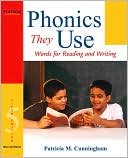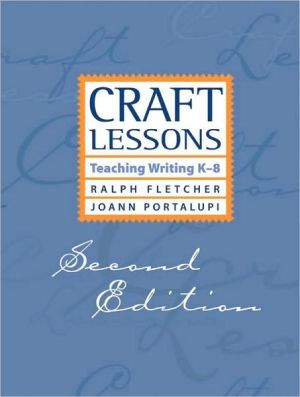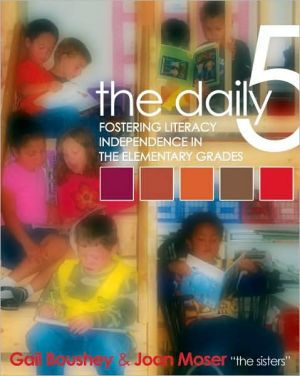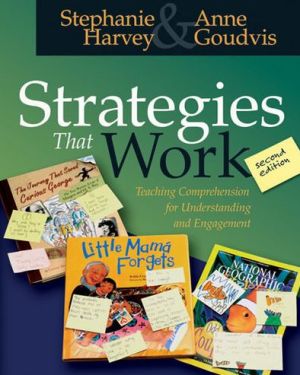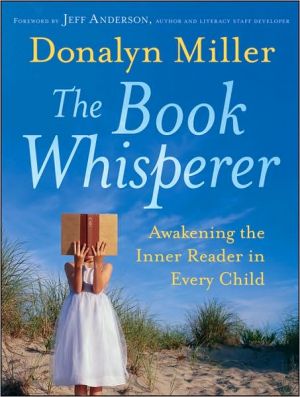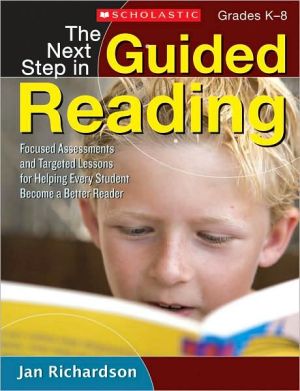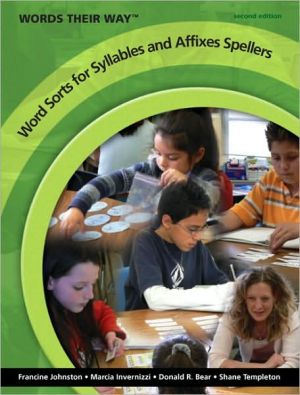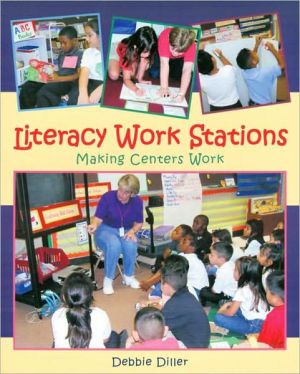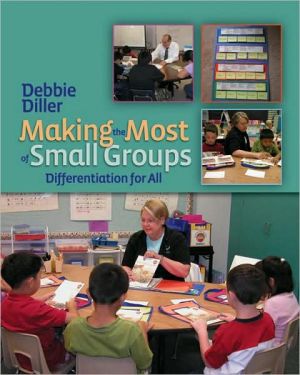Phonics They Use: Words for Reading and Writing
Search in google:
Written by an outstanding scholar, Phonics They Use seamlessly weaves together the complex and varied strategic approaches needed to help students develop reading and spelling skills.Long-positioned and long-respected as a bestseller by both pre-service and practicing teachers of reading, this affordable text offers a coherent collection of practical, hands-on activities that provide a framework for teaching phonics. The Fourth Edition continues to emphasize that what matters is not how much phonics students know but what they actually use when they need phonics for decoding a new word, for reading and spelling a new word, and for writing. Rather than subscribe to a single theory, Pat Cunningham stresses a balanced reading program—-incorporating a variety of strategic approaches—tied to the individual needs of children. Packed with new activities and strategies for teaching reading, this book is an invaluable resource for any new or veteran teacher.Now teachers have access to a new grade-level series Making Words that offers fresh multi-level activities and lessons for the kindergarten through fifth grade classroom. Based on the active and innovative approach to making words that teachers and their students have grown to love in Phonics They Use, this new series is the best resource you can have on hand for motivating your students to learn words!Take a Peek at What's New to the Edition!New Chapter on Making Words in Kindergarten (Ch. 4) describes and provides sample lesson plans on how teachers can make each kindergarten student a letter of the alphabet, using a big letter card, to teaching them how to begin to form words.New Chapter on Making Words in Upper Grades (Ch. 11) describes and provides sample lessons on how making words has been adapted for use of older students in upper grades, by emphasizing the prefixes, suffixes, roots and spelling changes that are the important decoding and spelling patterns for polysyllabic words. Inclusion of hints and suggestions for English Language Learners scattered throughout the chapters, which help make phonics and spelling instruction more successful for ELLs as they learn to read and write. These “For English Language Learner” boxes include a variety of ways teachers have adapted the Phonics They Use activities to include their children learning English.
Introduction xiiiBuilding the Foundation for Phonics They Can Use 1Early Reading and Writing Activities 3Early Reading Concepts 4Shared Reading of Predictable Books 8Predictable Charts 12Writing 17Getting to Know You 24Summary 28Phonological and Phonemic Awareness 29Developing Phonological Awareness 30Developing the Concept of Rhyme 31Teaching Blending and Segmenting 35Using Names to Build Phonological and Phonemic Awareness 40Summary 41Concrete Words, Letter Names, and Sounds 42Names 42Alphabet Books 46Letter Actions and Foods 48Key Words for Sounds 50Changing a Hen to a Fox 52Guess the Covered Word 54Summary 56Making Words in Kindergarten 57Making Words Kindergarten Lesson a-t 59Pattern: ent 66Pattern: ay 67Pattern: ate 68Summary: How the Foundational Activities Are Multilevel 71Fluency 73Fluency Activities 75Independent Reading Develops Fluency 77Daily Writing Develops Fluency 79Rereading Develops Fluency 81Fluency Development Lessons 84Summary 85High-Frequency Words 86Building Meaning for High-Frequency Words 88Doing a Word Wall 91"On-the-Back" Activities 96Other Word-Wall Practice Activities 104Portable and Take-Home Word Walls 106Theme Boards 107Summary: How the Fluency Activities and Word Walls Are Multilevel 108Using Phonics and Spelling Patterns 109Making Words 112A Sample Making Words Lesson 116Making Words Homework 121Additional Making Words Lessons 121Summary 126Rhyme-Based Decoding and Spelling Activities 127Learning the Most Common Rhyming Patterns 127Rounding Up the Rhymes 128Using Words You Know 131Reading/Writing Rhymes 137Summary 142Spelling Activities 144What Looks Right? 145Word Sorting and Hunting 149Summary: How the Decoding and Spelling Activities Are Multilevel 153Big Words 155Decoding and Spelling Big Words 158Teaching Common Prefixes and Suffixes 159Teaching Common Root Words 166The Nifty Thrifty Fifty 169Modeling: How to Figure Out a Big Word 176Word Detectives 179Big-Word Collectors 182The Wheel 185Mystery Word Match 187Summary 192Making Words in Upper Grades 193A Third-Grade Making Words Lesson 195A Fourth-Grade Making Words Lesson 199A Fifth-Grade Making Words Lesson 205Summary: How the Big Words Activities Are Multilevel 211Coaching, Assessment, Research, and Terminology 213Coaching for Strategic Decoding and Spelling 214Coaching during Writing Conferences 215Coaching during Reading 216Summary 220Assessment 221What Is Assessment? 221Assessing Early Reading Strategies 222Assessing Word Strategies 224The Names Test 229Summary 234The Theory and the Research- The Why Underlying the How 235My Personal Phonics History 236What We Know about How Good Readers Read Words 240What We Know about How Children Learn to Read Words 243Summary: The Research and Phonics They Use 250Phonics Terminology for Teachers 251References 257Index 265
